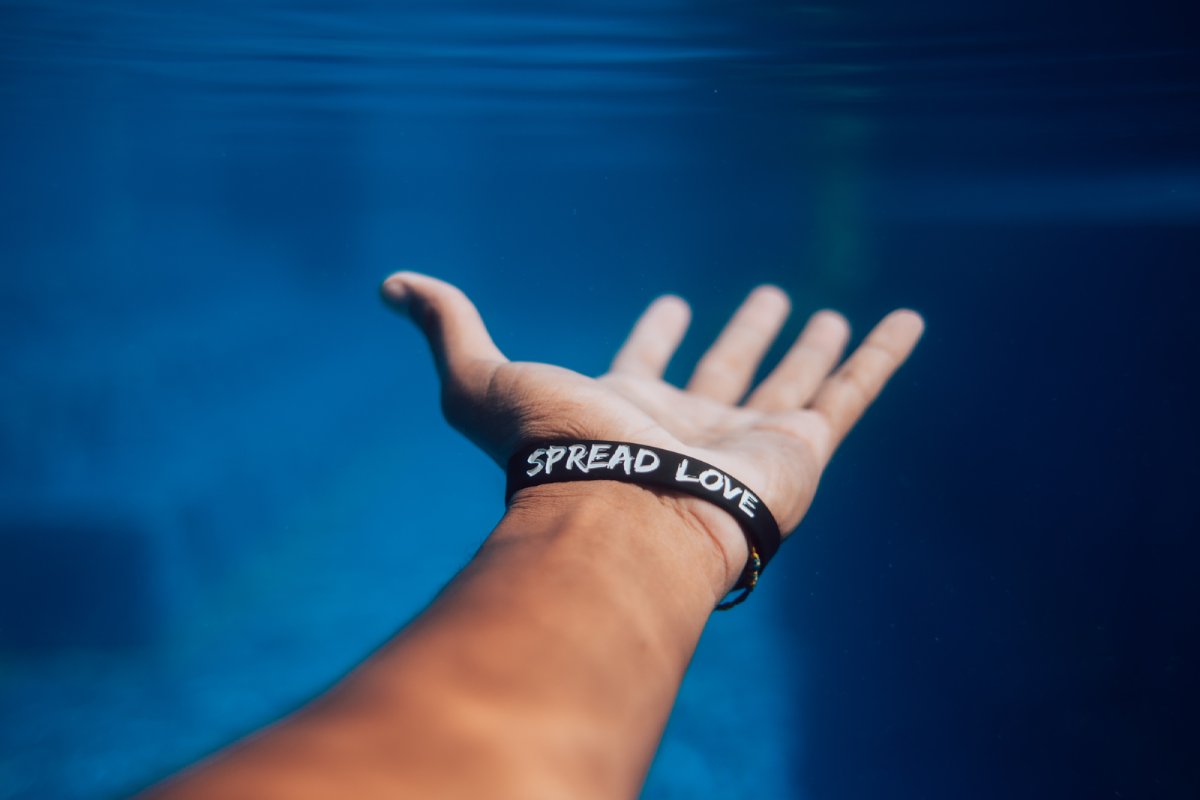The five Yamas are a key aspect of yogic philosophy, serving as moral codes or guidelines for treating others and ourselves. The first Yama Ahimsa translates to non-violence and non-harming. Non-violence applies to others, ourselves, and the environment.
In this day and age, we could all use some more Ahimsa in our lives. Thus, studying yogic philosophy, such as the eight-limbed path, can help us to become better human beings and play our role in making the world a better place.
Like all the Yamas, we can practice non-violence in our daily life and in our asana practice. This article will explore what Ahimsa means and how we can bring more of it into our day and onto the mat.
Contents
Ahimsa In The Yoga Sutras
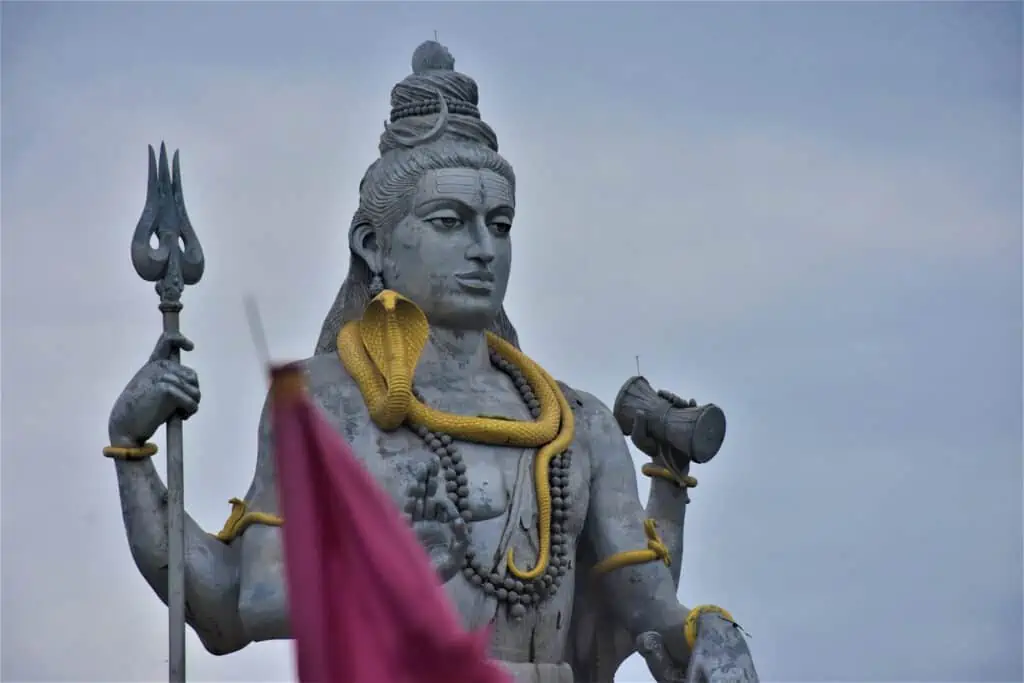
The Yamas are the first limb of the eight-limbed path, found in the ancient yogic text, the Yoga Sutras, compiled by Indian sage Patanjali between 500 BCE to 3rd century CE. Patanjali’s ashtanga yoga path comprises eight limbs, the first of which is the Yamas.
The Yamas are the fundamental stage of internal practice and the first step on the spiritual path of yoga. Although written at least 1,700 years ago, the Yamas can still apply to modern life, albeit in different ways than in the past.
The first Yama is Ahimsa, a Sanskrit word meaning non-violence or non-harming. Therefore, yogis practice Ahimsa by showing loving kindness to all living things and the planet and by choosing peace and love over war and violence.
The other four Yamas are:
- Satya (truthfulness)
- Asteya (non-stealing)
- Brahmacharya (celibacy or’ correct use of energy)
- Aparigraha (non-possessiveness or non-greed)
How To Practice Ahimsa In Daily Life
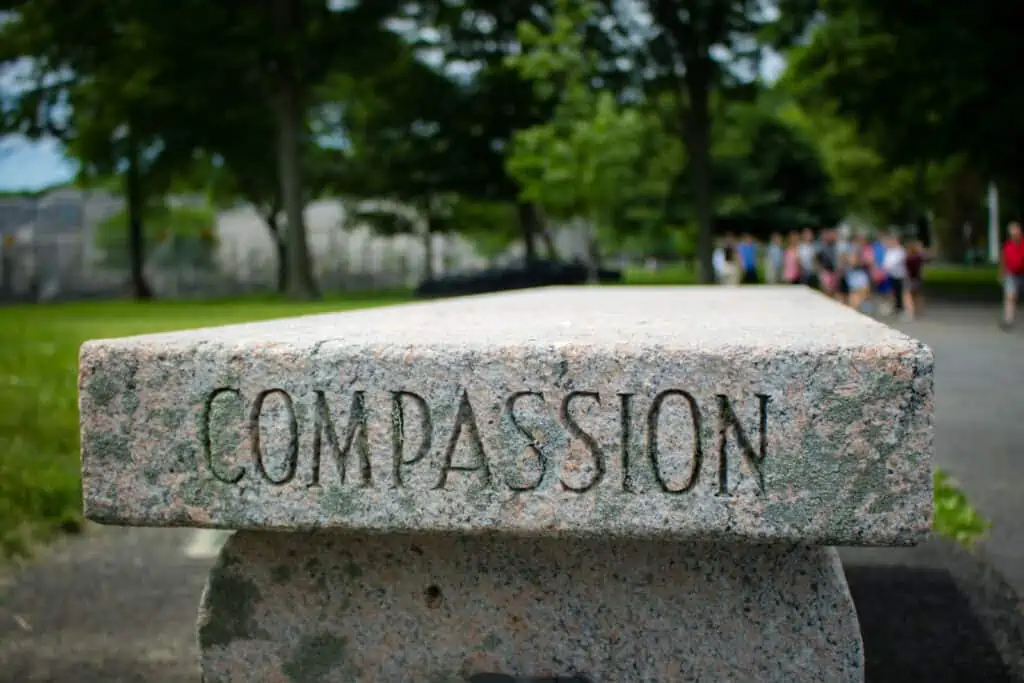
With so much conflict and destruction going on these days, you only have to look at the news to see that Ahimsa is something many of us lack in our lives. While you may be unable to stop all suffering, taking the great vow to practice Ahimsa can inspire others to do the same.
Here are some ways you can apply the first Yama to your life.
Reduce violent actions, words, and thoughts toward others
No one is perfect, so it is unrealistic to say you will never again react to stressful situations with violence or harmful words. Instead of aiming for perfection, start by becoming more aware of what you currently do that could be harmful.
The Yamas allow us to become more self-aware and, thus, become the best version of ourselves. Of course, advancing in personal or spiritual development takes time. Still, the more aware we become of our shortcomings, the easier it will be to change our behavior.
Start to catch yourself whenever you think or say something harmful or react to a situation with physical or emotional violence. At first, you may not realize you did it until one hour later, but with practice, you’ll notice these things within 30, 20, 10, and then 5 minutes.
Eventually, your heightened self-awareness will allow you to catch yourself in the moment of violence. This is when you take back control and have the power to change your actions, words, and thoughts.
Adopt a more sustainable life
Ahimsa is not just about showing respect and compassion towards other human beings but all living things and nature. Therefore, practicing Ahimsa involves learning about and being mindful of how our decisions and actions affect the environment. This allows us to implement ethical restraints to protect and take care of the world.
You can live a more sustainable life in many ways, such as recycling, reducing plastic usage, refraining from “fast fashion,” or walking instead of driving. All these things help minimize global pollution and thus, keep wildlife thriving and mother nature in balance.
Eat a vegetarian or vegan diet
One of the most prominent conversations around Ahimsa today is the consumption of meat and the detrimental effects it has on the environment and the negative karma it may carry. Firstly, if Ahimsa means to treat all living beings with love and respect, how can killing 72 billion animals a year be justified?
Secondly, when animals are bred for meat, they endure tremendous suffering, and their life and death often involve a great deal of violence. Although we may not be the ones to kill the animals, when we buy and eat meat, we are contributing to and encouraging this mass violence and suffering of animals. It is not a direct form of harm, but many people argue that you cannot truly practice compassion unless you switch to a vegan diet.
How To Practice Ahimsa Towards Yourself

Although the five Yamas are moral codes of how to behave in the world, they also carry vital lessons on behaving towards ourselves.
You may practice Ahimsa towards others, but if you lack compassion and kindness towards yourself, the practice of Ahimsa is not complete. Here’s how to bring more non-violence into your relationship with yourself.
Self-compassion and kindness
We may not be harming ourselves physically, but we often experience harmful self-talk where we put ourselves down. For example, if you feel that you are not good enough or you punish yourself when you make a mistake, you are emitting harm to yourself.
Harmful thoughts and negative self-talk can lead to self-sabotage, where we do not allow ourselves the opportunities and success we deserve. Therefore, the longer we stay stuck in the web of harmful thoughts, the more we hold ourselves back from freedom and happiness. So if negative self-talk is something you know you suffer from, being kinder to yourself is the first step to practicing the Yama Ahimsa.
Nourishment
Another way we can practice Ahimsa towards ourselves is by nourishing our bodies with healthy food and regular movement. If we neglect our bodies, which are the vehicles of our souls, we will suffer from disease further down the line.
So instead, be sure to treat your body as the temple it is, with healthy, wholesome food, exercise, and good lifestyle habits. If you nourish your body, not only will you live a longer life, but you will progress further down the path of yoga towards enlightenment.
How To Practice Non Violence In Yoga Practice
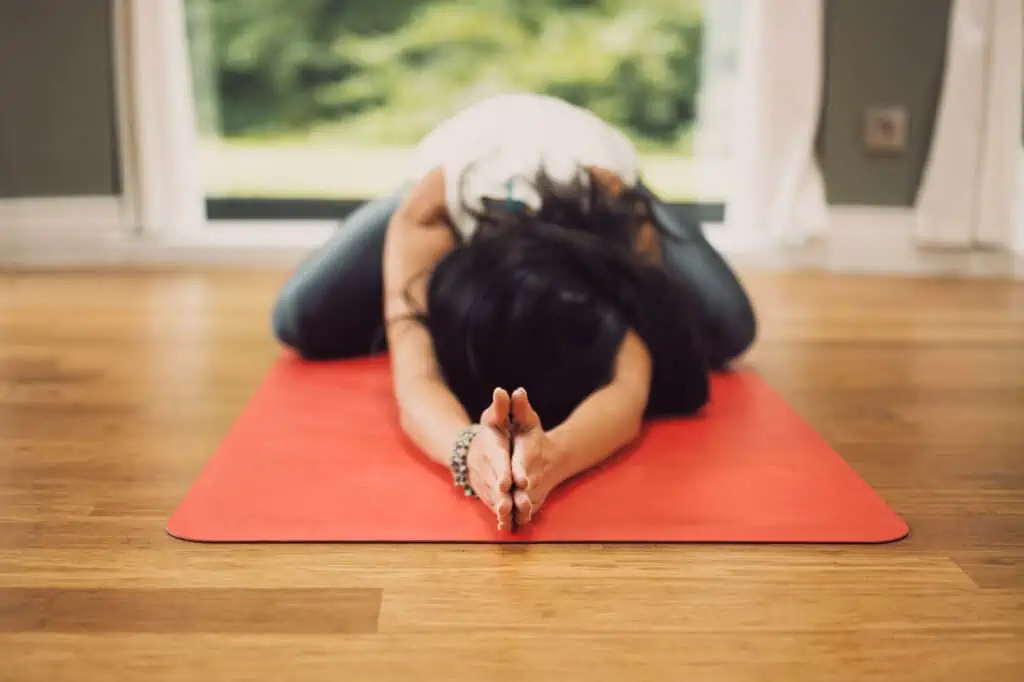
If you don’t treat yourself with loving kindness in your life, chances are you’re not doing it in your asana practice either. There are many ways we may unintentionally cause harm to ourselves on the mat.
For example, maybe we push ourselves too far in a posture, resulting in injury. Or perhaps we emotionally beat ourselves up because our alignment is not as good as someone else’s. So here is how you can practice the first Yama Ahimsa in your yoga practice.
Respect your body’s limitations
Whether you’re a beginner or an experienced yogi, you may try to push your body to do more than it can during your practice. As a beginner, it’s natural to want to progress fast so that you can keep up with the class and do all the postures. However, if you attempt asanas that your body is not ready for, you’ll physically harm yourself by causing an injury.
Likewise, you might feel frustrated if you’ve been practicing yoga for a while and still cannot do challenging postures like the splits. This could result in harmful thoughts towards yourself, as you put yourself down for not being good enough. Alternatively, you might tell yourself you’re not working hard enough and push your body more to get into the shape, resulting in physical self-harm.
Practicing non-violence in your yoga practice means understanding that we all have different bone structures; thus, we all have physical limitations. Yoga can help us become more flexible, but it cannot change the structure of our bones. Therefore, there will likely be a few postures you will struggle with no matter how much or how long you practice, and that’s ok.
Honor how you feel each day
Part of respecting your body’s limitations is honoring how you feel daily. Some days we are full of energy and can challenge ourselves with advanced postures or a demanding flow. Other days, we may feel tired and need something more gentle and restorative.
If we try to push ourselves in every yoga session, we ignore the needs of our bodies. Therefore, we should notice and accept that we feel different every day; thus, how we show up for each session will differ. If we can do this, we can use yoga practice for what it is supposed to be, a tool for nourishing our bodies, minds, and souls.
Incorporating meditation practices into your yoga sessions will help you connect deeper with your body and mind and, thus, become aware of how you are feeling. I recommend doing a short meditation at the beginning of your yoga practice using a body scan technique.
In a body scan, you move your awareness from the top of your head down to your feet, noticing how each part of your body feels. This helps you determine if you have any pain or tension and thus if there are any specific body parts you need to be gentle with during your practice.
After the body scan, take a few minutes to breathe into your heart center, allowing any emotions present to arise. If and when you feel emotions coming up, don’t try to explore the feelings or push them away; simply sit with them. This will help you understand how you are feeling emotionally that day and determine what type of practice you need.
Don’t compare yourself to others
When teaching large groups, I often say to my students to “stay on your own mat.” Of course, this is not literal as students are not stealing each other’s mat space. It means staying focused on what’s happening on your mat and not being concerned with what is happening elsewhere.
As human beings, we have the tendency to compare ourselves with others. Whether in life, yoga, or social media, we want to see what other people are doing. However, the problem with this is if others appear to be doing something better than us, we feel bad and put ourselves down for not being as good as them.
So whenever you go to a yoga class, practice “staying on your own mat” by concerning yourself only with how your body feels. By stopping your eyes from wandering around the room, your mind will, in turn, control the harmful comparison and judgemental thoughts.
Final Thoughts
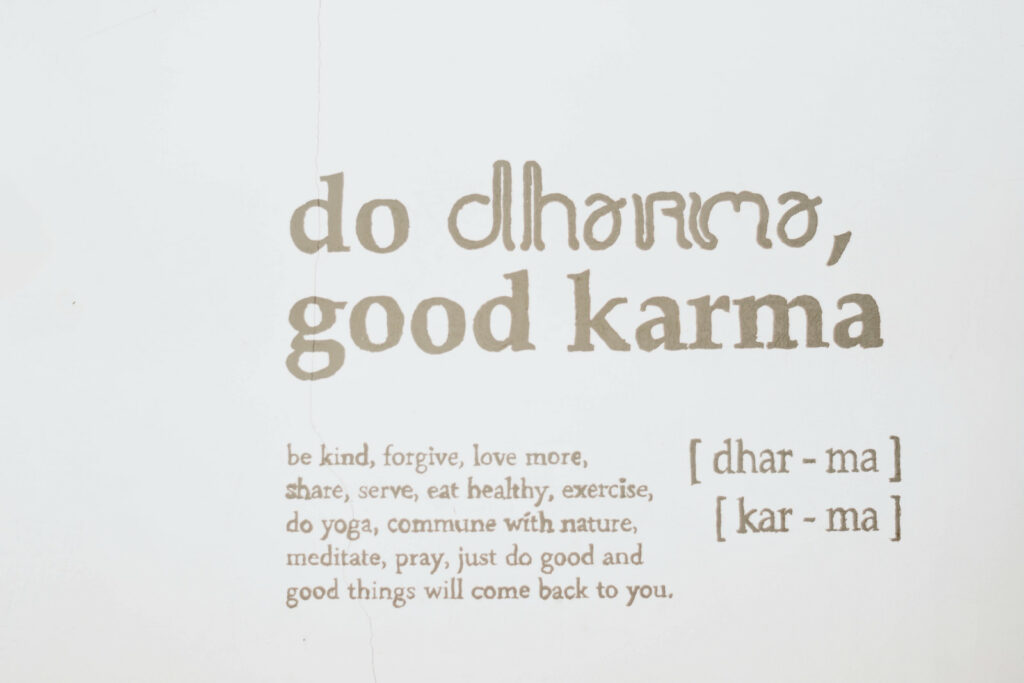
The first limb of yoga offers guidelines on how to better treat others, ourselves, and the environment. By practicing Ahimsa, we can become kinder, more compassionate, and more loving human beings and thus, take a step along the spiritual path to enlightenment.


